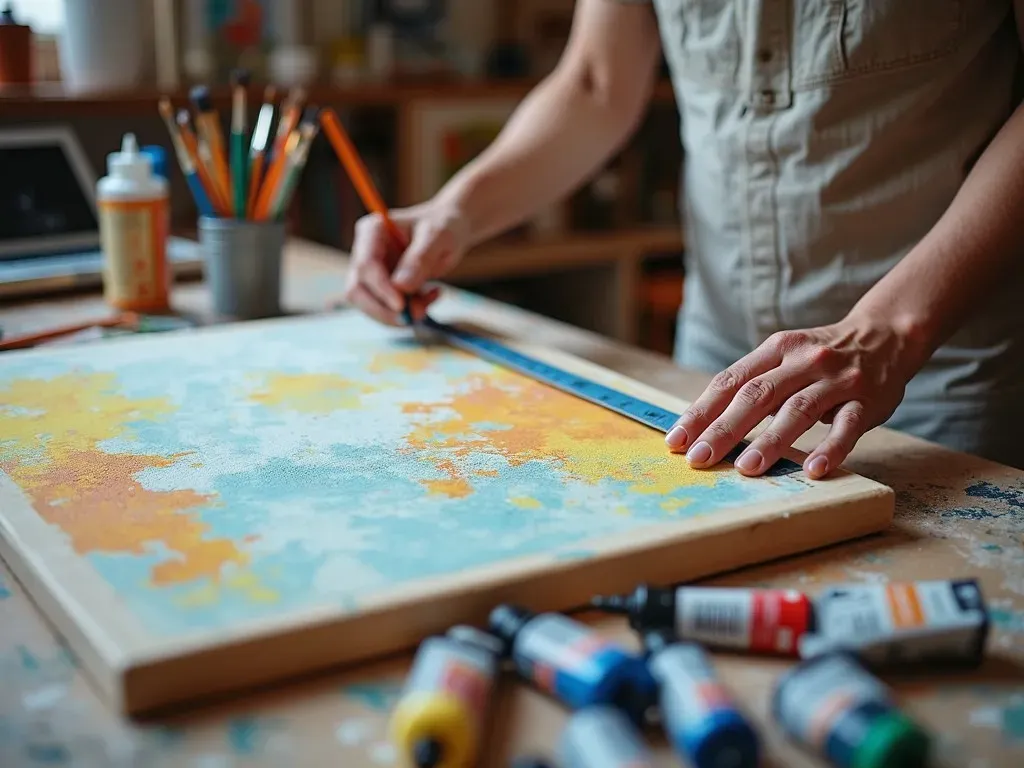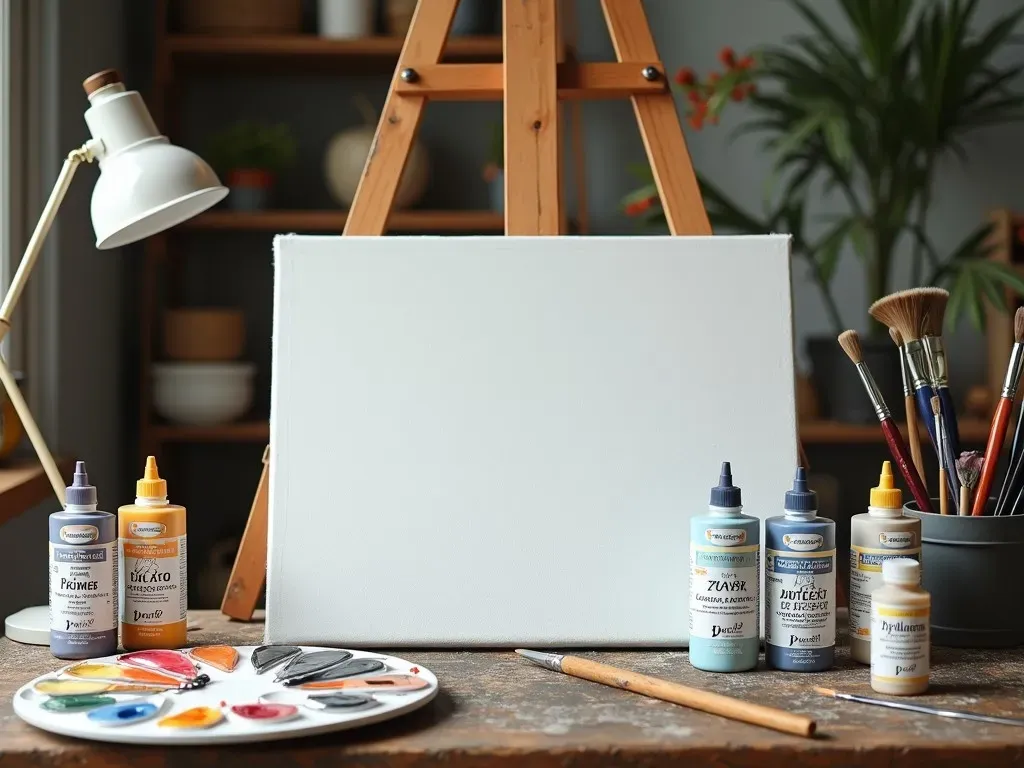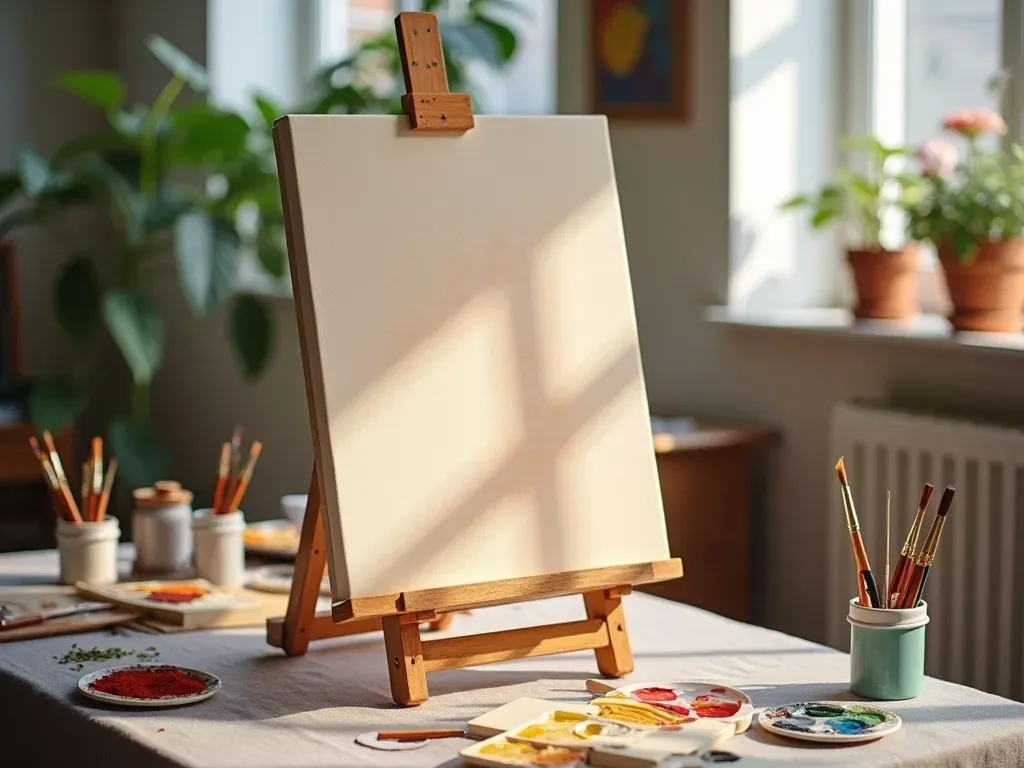When it comes to oil painting, the preparation of your canvas is a crucial step that lays the groundwork for a successful artwork. Understanding how to prepare canvas for oil painting ensures you create a smooth surface for your paint and helps prevent issues like cracking and peeling later on.
Understanding Canvas Types
Before diving into the priming process, it’s essential to know the types of canvases available for oil painting. The two most popular materials are:
- Cotton Canvas: This is a cost-effective option that is readily available. It absorbs paint well but has less durability compared to linen.
- Linen Canvas: More expensive, but it offers superior durability and a smoother finish, which is particularly loved by professional artists.
| Canvas Type | Cost | Durability | Texture |
|---|---|---|---|
| Cotton | Low | Moderate | Slightly rough |
| Linen | High | High | Smoother |
Sizing vs. Priming: What’s the Difference?
It’s vital to differentiate between sizing and priming, as both serve different purposes:
- Sizing: This involves applying a liquid layer (usually rabbit skin glue or acrylic medium) to the canvas to prevent the oil from leaching into the fibers.
- Priming: This layer serves to prepare the surface for painting, providing a smooth finish and preventing paint absorption.
Reference Video
How Do You Prime a Canvas for Oil Painting?
1. Gather Your Materials
To properly prime your canvas, you will need:
- Raw Canvas: Choose either cotton or linen
- Rabbit Skin Glue or Acrylic Size: For the sizing process
- Gesso or Oil Primer: For priming
- Sandpaper: For smoothing the surface
- Natural Hair Brushes: For applying the size and primer
- Palette Knife: For mixing
- Water: For dissolving glue
2. Sizing the Canvas
-
Prepare the Size: If using rabbit skin glue, dissolve it in warm water according to manufacturer instructions (usually about 1 part glue to 8 parts water).

-
Apply the Size: Using a brush, apply a thin layer to the raw canvas. Brush continuously to soak in the size evenly.
-
Let It Dry: Allow it to dry completely before moving to the next step, which may take several hours.
3. Priming the Canvas
-
Choose Your Primer: While gesso is often used, a traditional oil primer offers a more suitable surface for oil paints. Mix your primer thoroughly with a palette knife.

-
First Coat of Primer: Apply the primer using a brush. It’s preferable to use a flat brush for an even application.
-
Drying Time: Let the first coat dry for at least 24 hours.
-
Sanding: Once dry, lightly sand the surface with fine-grit sandpaper. This creates a smooth finish and prepares the canvas for the second coat.
-
Second Coat: Apply a second coat of primer in the same manner, followed by another drying and sanding phase.
-
Final Smoothing: Depending on the surface you desire, you may choose to sand again lightly.
4. Toning the Canvas (Optional)
Once priming is complete, you can tone the canvas using a thin oil wash of color. This adds a subtle hue for your painting backdrop.
- Choose a warm or neutral tone.
- Apply it with a clean brush or cloth and allow to dry before painting.

Important Priming Techniques
- Thin Layers: Always apply thin layers of both size and primer. This method ensures better adhesion and a smoother surface.
- Brush Technique: Use straight, even strokes and avoid over-brushing.
- Ventilation: Ensure good ventilation during the drying process to expedite drying and remove any odors related to the materials used.
Common Mistakes to Avoid
- Skipping Sizing: Always size your canvas before priming to prevent oil absorption.
- Too Much Primer: Over-application can lead to cracking.
- Inadequate Drying: Never rush the drying process; ensure each layer dries completely.
Additional Tips for Success
- Use Quality Materials: Investing in quality canvas, size, and primer will yield the best results.
- Experiment: Try different Techniques and surfaces to find what works best for your style.
- Plan Your Painting: Consider the color palette you’ll use; toning can significantly affect the final outcome of your work.
Frequently Asked Questions
How long does it take to prepare a canvas for oil painting?
Typically, preparing a canvas can take anywhere from a few hours to a few days, depending on the drying times between layers.
What is the best type of primer for oil painting?
Oil primer is often recommended for oil painting, as it offers better adhesion and a smoother finish compared to acrylic gesso.
Can I paint directly on raw canvas?
While it’s technically possible, painting directly on a raw canvas can lead to problems such as paint absorption and degradation of the canvas over time.
Is it necessary to tone a canvas?
Toning is optional; however, it can enhance the vibrancy of colors and provide a harmonious foundation for your painting.
Recommended Resources
For further reading on the topic, you might want to check out this detailed guide on preparing your canvas for oil painting which dives deeper into techniques and products available.
Armed with this comprehensive guide, you are now ready to accurately prepare your canvas for oil painting. Enjoy the creative process, and remember that the preparation phase is just as important as the painting itself!
